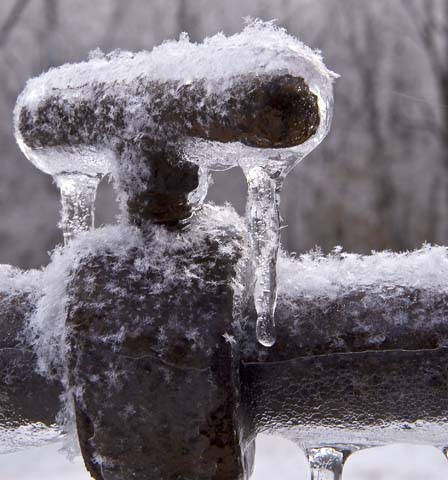Tips to Protect Pipes from Cold Weather: Professional Tips
Tips to Protect Pipes from Cold Weather: Professional Tips
Blog Article
Just how do you actually feel about Preventing and dealing with frozen pipes?

Winter can wreak havoc on your plumbing, especially by freezing pipelines. Right here's exactly how to stop it from taking place and what to do if it does.
Intro
As temperature levels decline, the danger of frozen pipelines boosts, potentially resulting in expensive repair services and water damages. Comprehending just how to stop icy pipelines is essential for property owners in chilly climates.
Prevention Tips
Shielding susceptible pipelines
Cover pipelines in insulation sleeves or utilize warm tape to safeguard them from freezing temperature levels. Focus on pipelines in unheated or outside locations of the home.
Home heating techniques
Maintain indoor spaces appropriately warmed, especially areas with plumbing. Open cupboard doors to allow warm air to circulate around pipelines under sinks.
Just how to identify frozen pipelines
Look for lowered water flow from taps, uncommon odors or sounds from pipes, and noticeable frost on subjected pipelines.
Long-Term Solutions
Architectural modifications
Think about rerouting pipelines away from exterior walls or unheated locations. Include extra insulation to attic rooms, basements, and crawl spaces.
Upgrading insulation
Purchase high-quality insulation for pipes, attic rooms, and walls. Proper insulation helps keep consistent temperatures and lowers the threat of icy pipelines.
Shielding Exterior Plumbing
Garden hoses and outdoor taps
Separate and drain pipes garden pipes before winter. Set up frost-proof spigots or cover outside taps with protected caps.
Understanding Icy Pipes
What creates pipelines to freeze?
Pipelines freeze when revealed to temperatures listed below 32 ° F (0 ° C) for expanded periods. As water inside the pipelines ices up, it broadens, taxing the pipe walls and potentially triggering them to burst.
Dangers and damages
Frozen pipelines can cause supply of water interruptions, property damages, and expensive fixings. Ruptured pipes can flooding homes and cause extensive architectural damage.
Indicators of Frozen Pipeline
Recognizing frozen pipelines early can avoid them from bursting.
What to Do If Your Pipes Freeze
Immediate actions to take
If you presume frozen pipes, keep faucets open to ease pressure as the ice melts. Utilize a hairdryer or towels taken in hot water to thaw pipelines gradually.
Verdict
Protecting against icy pipelines needs aggressive procedures and quick responses. By understanding the reasons, signs, and preventive measures, house owners can safeguard their plumbing throughout winter.
5 Ways to Prevent Frozen Pipes
Drain Outdoor Faucets and Disconnect Hoses
First, close the shut-off valve that controls the flow of water in the pipe to your outdoor faucet. Then, head outside to disconnect and drain your hose and open the outdoor faucet to allow the water to completely drain out of the line. Turn off the faucet when done. Finally, head back to the shut-off valve and drain the remaining water inside the pipe into a bucket or container. Additionally, if you have a home irrigation system, you should consider hiring an expert to clear the system of water each year.
Insulate Pipes
One of the best and most cost-effective methods for preventing frozen water pipes is to wrap your pipes with insulation. This is especially important for areas in your home that aren’t exposed to heat, such as an attic. We suggest using foam sleeves, which can typically be found at your local hardware store.
Keep Heat Running at 65
Your pipes are located inside your walls, and the temperature there is much colder than the rest of the house. To prevent your pipes from freezing, The Insurance Information Institute suggests that you keep your home heated to at least 65 degrees, even when traveling. You may want to invest in smart devices that can keep an eye on the temperature in your home while you’re away.
Leave Water Dripping
Moving water — even a small trickle — can prevent ice from forming inside your pipes. When freezing temps are imminent, start a drip of water from all faucets that serve exposed pipes. Leaving a few faucets running will also help relieve pressure inside the pipes and help prevent a rupture if the water inside freezes.
Open Cupboard Doors
Warm your kitchen and bathroom pipes by opening cupboards and vanities. You should also leave your interior doors ajar to help warm air circulate evenly throughout your home.

I am very interested in Preventing and dealing with frozen pipes and I hope you enjoyed reading the piece. Sharing is caring. Who knows, you could be doing someone a favor. I enjoy reading our article about How to prepare your home plumbing for winter weather.
Schedule Service Pickup Report this page